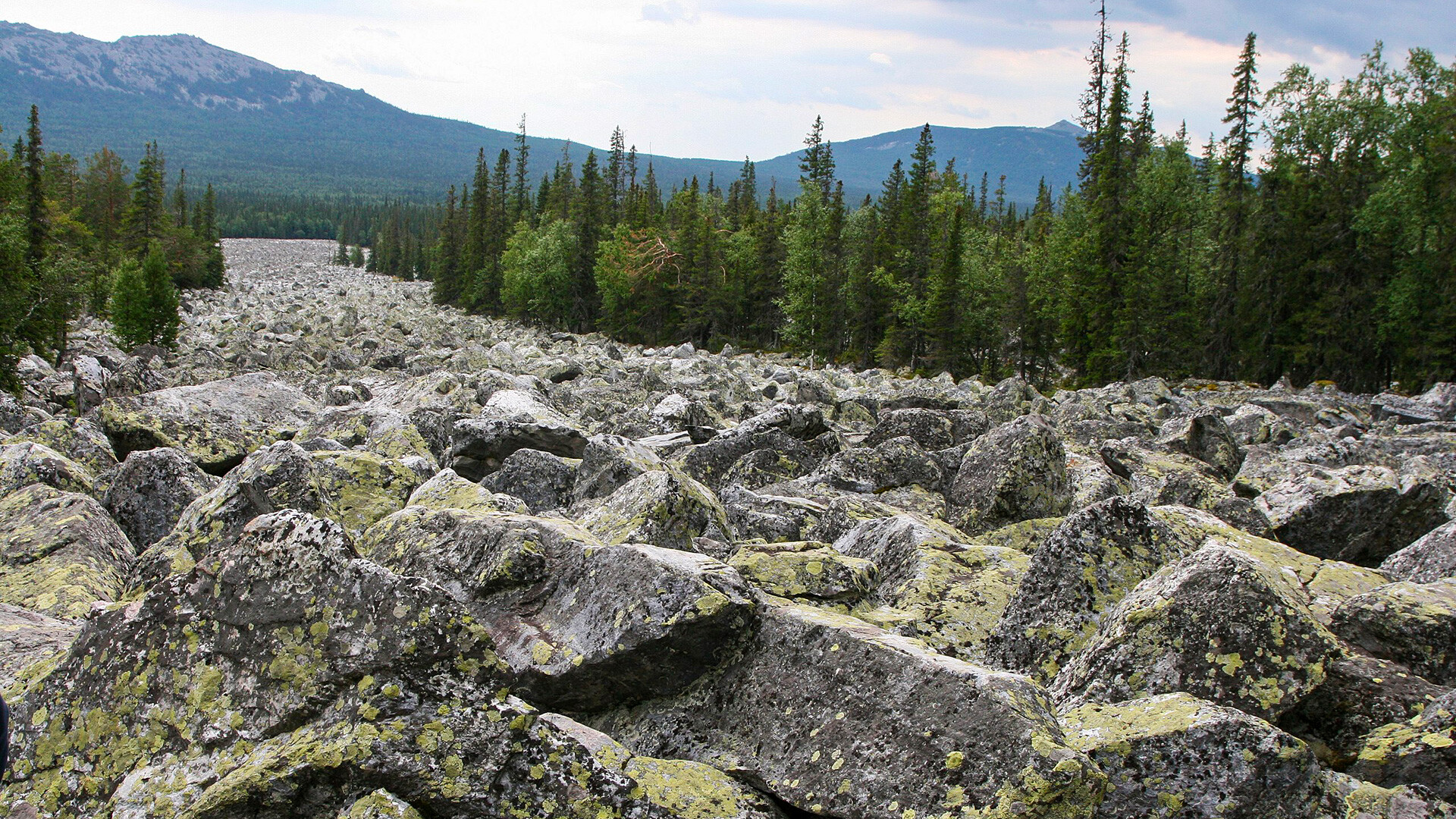
«Stone river» near Iremel mountain, South Ural, Bashkiria.
Shamil Valeev (CC BY-SA)Unusual natural landscapes - dubbed ‘stone rivers’ or ‘stone runs’ - can be found in the Urals and Siberia. Locals call them ‘kurums’ or ‘kurumniks’. Usually, they are formed in mountainous terrain where there are height differences. They are piles of stones that slowly move from the top and form a “stream”.
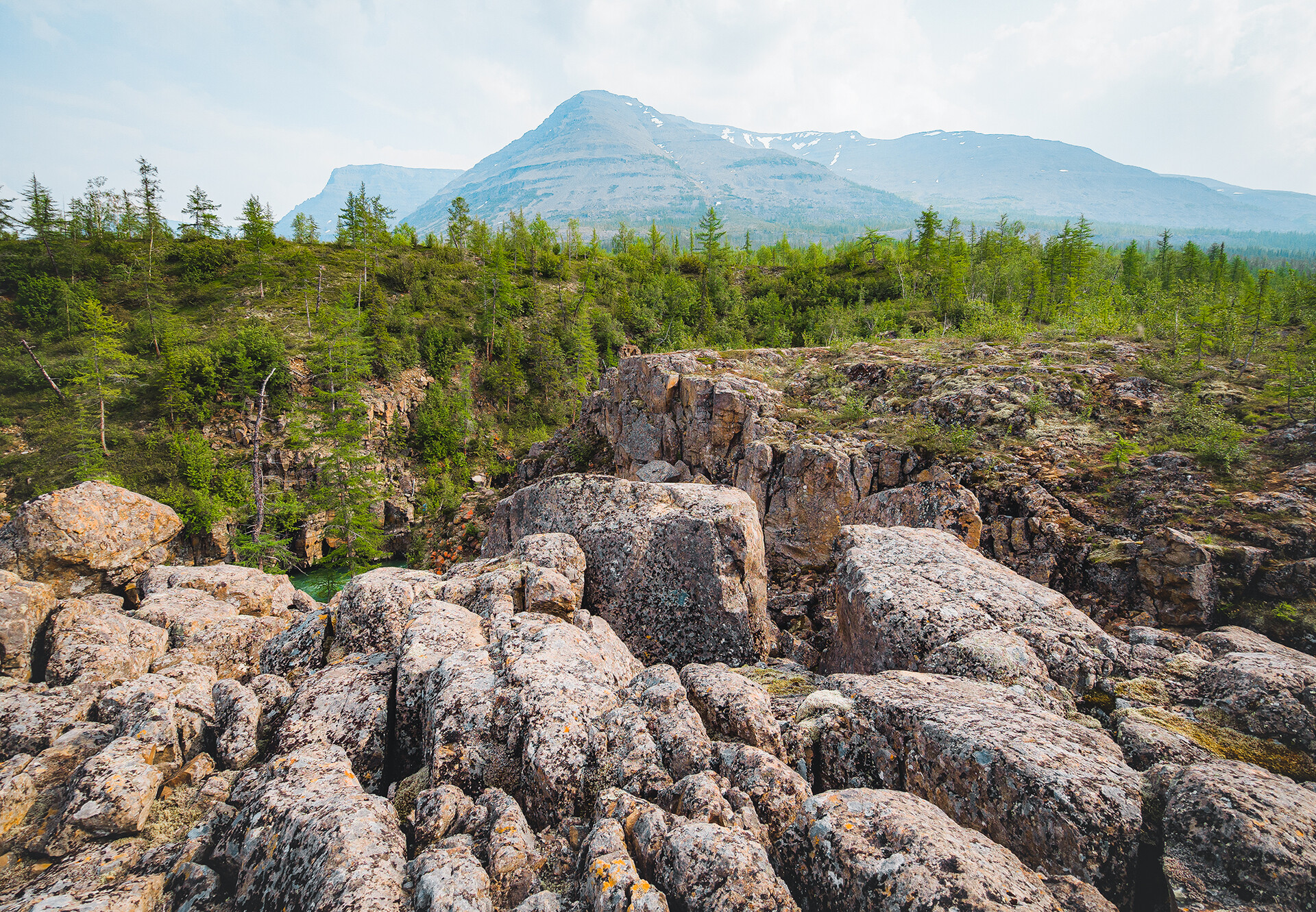
Kurumniks at the Lama Lake.
Pavel KuzmichevWe got acquainted with them during a hike across the Putorana Plateau (read our exclusive report about Lama Lake, one of the most picturesque places on the plateau), however, they were rather small ‘kurums’. It turns out that the largest ‘stone runs’ in the world are located in the Urals!
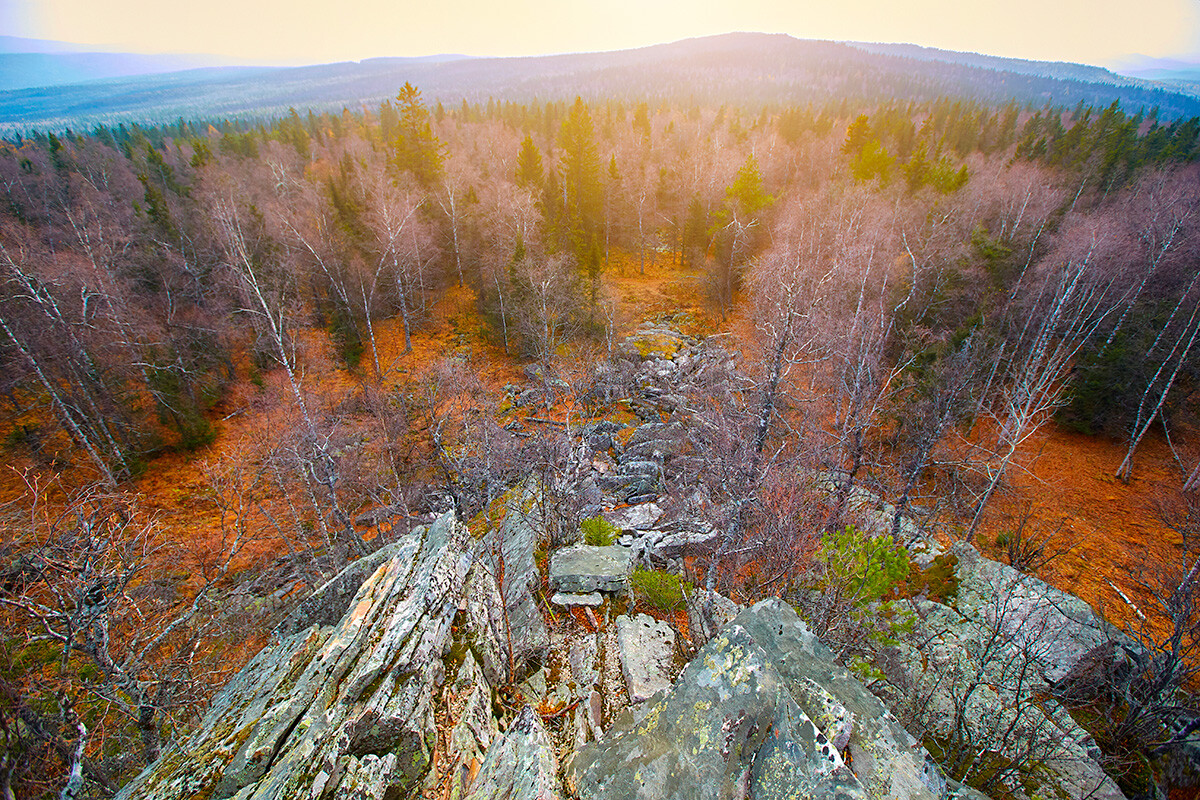
The stone river to the ridge Taganay.
Svetlana Zaitseva/Getty ImagesThe ‘stone run’ in the Taganay National Park in the Urals stretches for 6 km and reaches up to 700 meters in width, at times. The weight of the largest stones amounts to roughly 10 tons. This is the largest ‘stone run’ in the world. At the same time, the ‘Big Stone River’ is comparable to ordinary rivers, as it also has water flowing in it. At a depth of several meters, hundreds of streams flow directly under the rocks and, when you walk along the stones, you can hear the rushing of water.
By the way, you may find the green aventurine gemstone among these stones in Taganay!
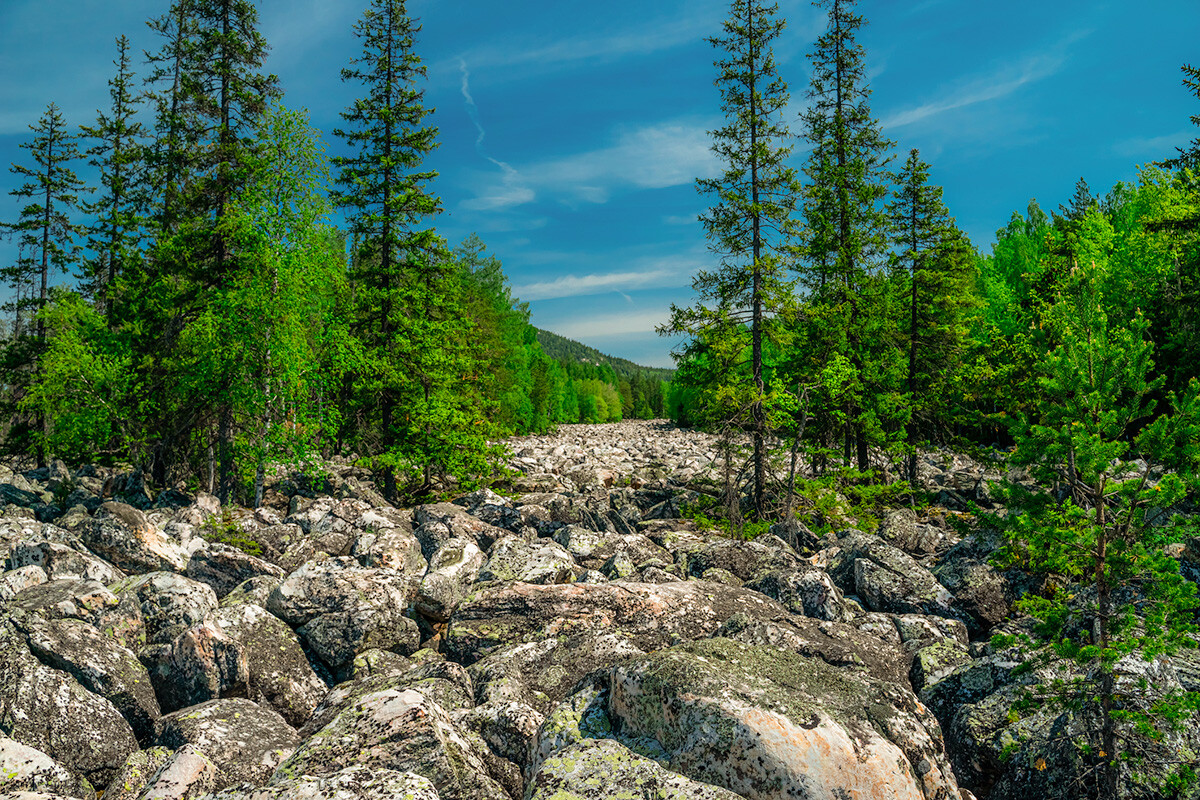
The stone river. Taganay National Park.
Legion MediaYou can also find stone rivers in other parts of the Urals and Siberia; many of them are located in remote places among the taiga mountains. For example, at the foot of the Big Iremel mountain in Bashkiria (also in the Southern Urals, on the border with Chelyabinsk Region) the unusual Tygyn River can be found. Its peculiarity is that most of it passes under ‘kurumniks’ - for about 6 km. After that, it turns into a normal river. There are similar ‘stone rivers’ in Perm Territory, near Mount Martay and in the Sayan Mountains in South Siberia.
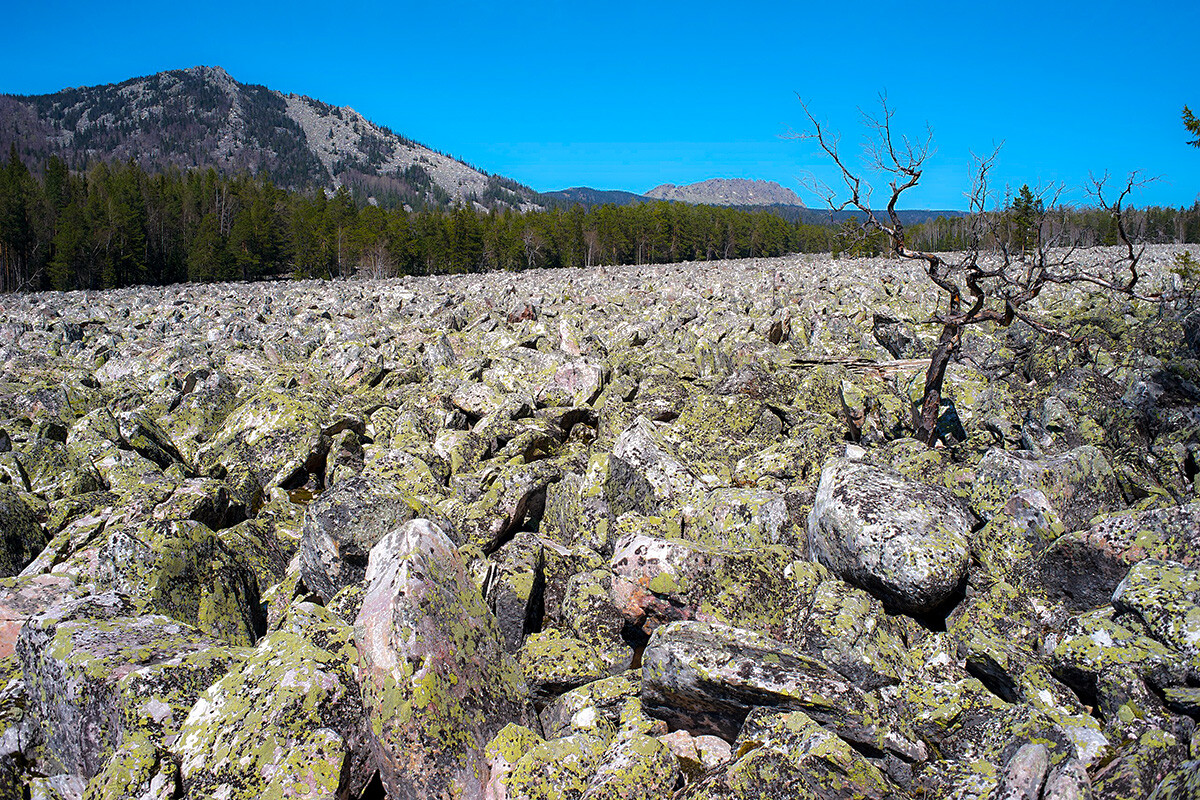
Aventurine gemstone.
Alxleo 74 (CC BY-SA)But, in addition, ‘kurums’ are also sometimes found in the European part of the country. In northwest Russia, there is the remote Gogland Island in the Gulf of Finland. A few families live there and work at lighthouses and a weather station. And ‘stone rivers’ can be found all over the island. They consist of rounded stones without vegetation.
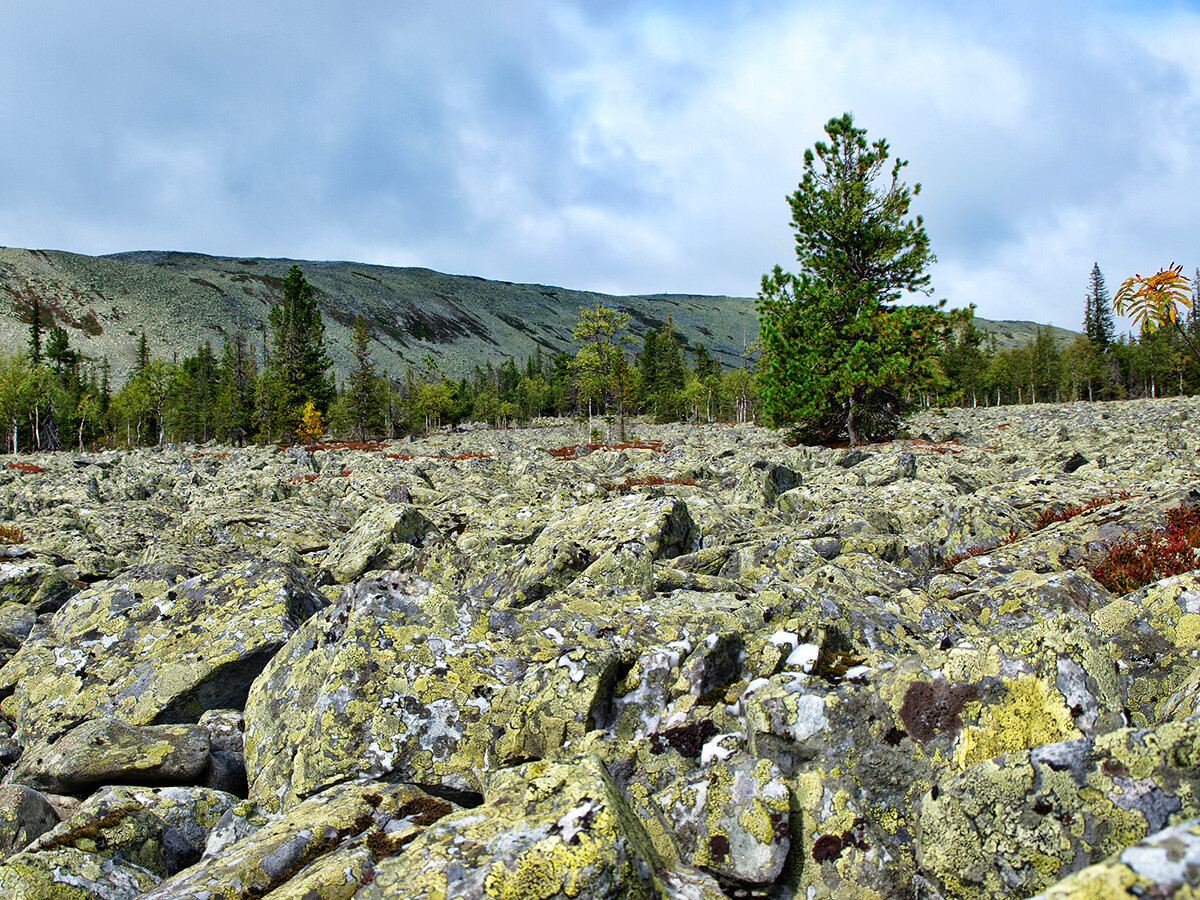
The stone river. View of Martay Range.
Legion MediaThere are several versions about the origin of this natural phenomenon. The most common one connects the stone streams with the last ice age.
About 10,000 years ago, the mountain tops were covered with glaciers and, when they began to melt, the mountain stones slowly began to slide down. Next, the rocks would collapse, debris would form, on which the next rocks would then fall and so on.
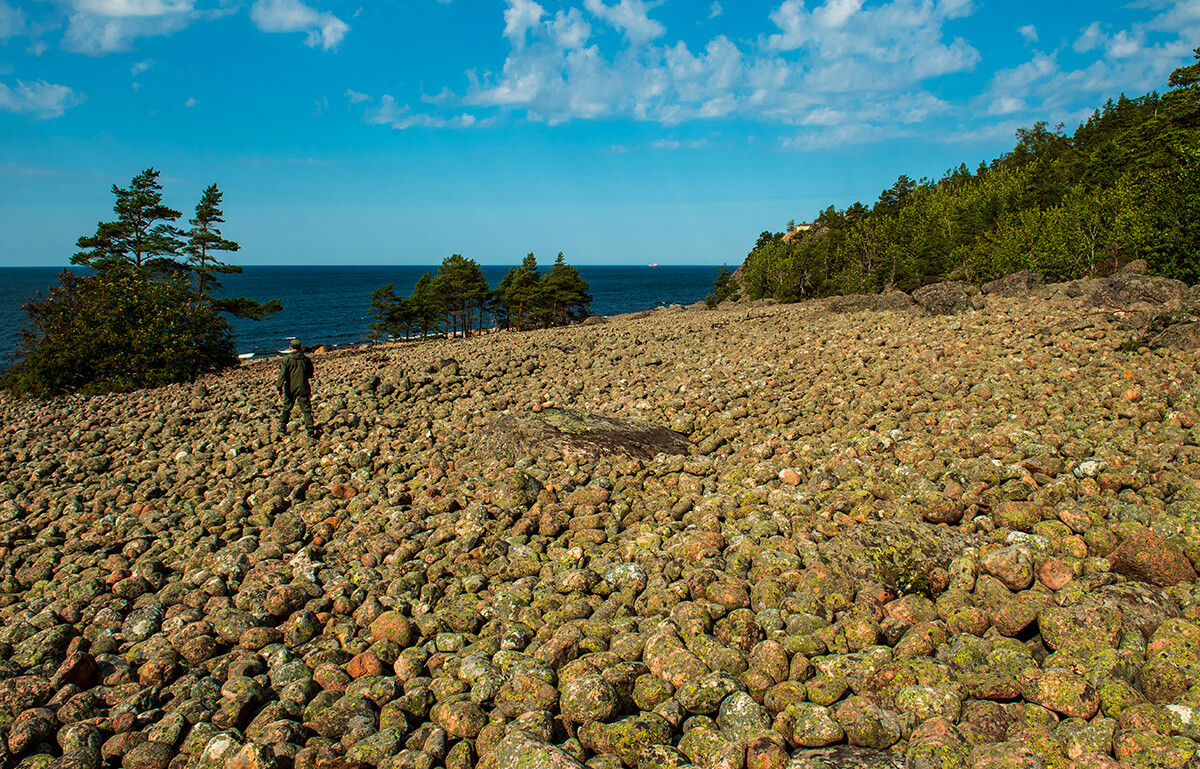
Gogland Island.
Alexei Danichev/SputnikThe rocks are still moving to this day. The rate of their movement is from a few centimeters to half a meter a year.
As you can see, these rivers are practically bare, with no trees or flora.
That is why you should walk with great caution on ‘kurumniks’! Hint: it’s safer to step on the stones overgrown with moss, as they are more stable.
Dear readers,
Our website and social media accounts are under threat of being restricted or banned, due to the current circumstances. So, to keep up with our latest content, simply do the following:
If using any of Russia Beyond's content, partly or in full, always provide an active hyperlink to the original material.
Subscribe
to our newsletter!
Get the week's best stories straight to your inbox